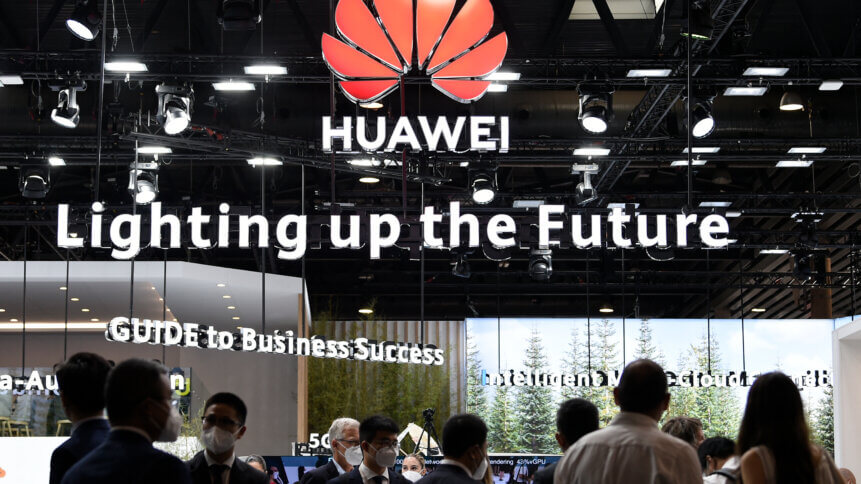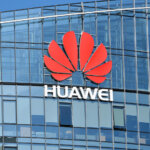5nm milestone: SMIC and Huawei defy US Sanctions in semiconductor push

- SMIC sets up new production lines in Shanghai for mass-producing Huawei-designed 5nm chips.
- SMIC’s 5nm process won’t use EUV lithography due to tool unavailability from ASML. Stockpiled DUV lithography will be used instead.
- Experts anticipate Huawei’s smartphone performance boost with this new production node this year.
In the dynamic landscape of the global semiconductor industry, China has emerged as a critical player, striving for self-sufficiency in chip production. Semiconductor Manufacturing International Corp (SMIC), China’s largest state-backed chipmaker, stands at the forefront of this endeavor, spearheading efforts to bolster the country’s semiconductor industry and reduce reliance on imports. Despite facing sanctions and technological hurdles, the company had most recently made significant strides in advancing chip fabrication processes by establishing new semiconductor production lines in Shanghai aimed at mass-producing chips using cutting-edge 5nm fabrication technology.
This move underscores SMIC’s commitment to staying abreast of technological advancements and positioning China as a global leader in semiconductor manufacturing. A recent report by the Financial Times claims SMIC will be collaborating with Huawei Technologies to produce next-generation smartphone processors this year. “The country’s biggest chipmaker, SMIC, has put together new semiconductor production lines in Shanghai, according to two people familiar with the move, to mass produce the chips designed by technology giant Huawei.”
SMIC’s collaboration with tech giant Huawei is poised to play a pivotal role in China’s semiconductor push. Through this partnership, SMIC aims to produce high-performance chips designed by Huawei, using its state-of-the-art fabrication capabilities.
In short, this strategic alliance enhances SMIC’s technological prowess and underscores the synergy between state-backed enterprises and leading technology firms in driving China’s semiconductor revolution.
Ultimately, the goal is to reduce dependence on foreign chip imports.
The move came when Beijing combined strategic partnerships and international collaborations to accelerate its semiconductor advancements. The country has forged partnerships with leading semiconductor companies and research institutions worldwide, facilitating technology transfer and knowledge exchange to bolster its semiconductor ecosystem.
But China’s semiconductor ambitions have not been without challenges and controversies. China’s semiconductor industry still lags behind its global counterparts in some critical regions, such as advanced process technology and design capabilities. Achieving true technological sovereignty remains an uphill battle, requiring sustained investments, talent cultivation, and policy support.
To top it off, the country has faced accusations of intellectual property theft, industrial espionage, and unfair trade practices, prompting scrutiny and backlash from the international community.
What does SMIC have planned for its 5nm collaboration with Huawei?
The decision to advance chip production despite sanctions reflects China’s strategic imperative to reduce reliance on foreign technology and assert its technological prowess on the world stage. China has invested heavily in semiconductor research and development in recent years, aiming to close the technological gap with leading chip-producing nations such as the US and Taiwan.
So SMIC’s efforts to set up new semiconductor production lines in Shanghai signify a pivotal moment in China’s quest, especially by harnessing Huawei’s expertise in chip design and SMIC’s manufacturing capabilities. What’s more, the collaboration between SMIC and Huawei highlights the synergy between state-backed enterprises and leading technology companies in China.

Can the SMIC 5nm process build on the success of the Huawei Mate Pro 60?
Two sources familiar with the plans revealed to the FT that SMIC intends to utilize its current US and Dutch equipment inventory to manufacture more minor 5nm chips. This production line will manufacture Kirin chips developed by Huawei’s HiSilicon unit, slated for upcoming iterations of its flagship smartphones.
Despite trailing behind the cutting-edge 3nm chips, the adoption of 5nm technology signifies China’s semiconductor sector’s steady advancement despite US export restrictions. “With the new 5nm node, Huawei is well on track to upgrade its new flagship handset and data center chips,” one person familiar with the plans told the FT.
How will this advancement help Huawei?
For context, SMIC’s 7nm and 5nm chip production lines utilize US machines accumulated before facing restrictions. Additionally, its fab includes ASML lithography machines acquired last year. However, the Dutch government’s recent revocation of export licenses for advanced machines has hindered ASML from selling to China.
“SMIC is facing a more significant roadblock for production expansion after the US and its alliance tightened export restrictions on advanced chipmaking gear,” one person close to the company told the FT. “Still, the fate of China’s chip industry and its technological development in the coming years will depend on these production lines by SMIC.”
Huawei has recently made waves with its Mate 60 Pro, boasting a 7nm processor that spurred a 50% surge in Chinese shipments in 2023. If successful for smartphones, SMIC’s 5nm product could extend to Huawei’s Ascend 920, narrowing the gap with Nvidia’s GPUs. Of course, the push for more advanced chips has resulted in added expenses.
Sources close to Chinese chip firms revealed that SMIC charges 40 to 50% higher prices for products from its 5nm and 7nm nodes than TSMC. Additionally, SMIC’s yield, or the number of usable chips, is less than one-third of TSMC’s.










